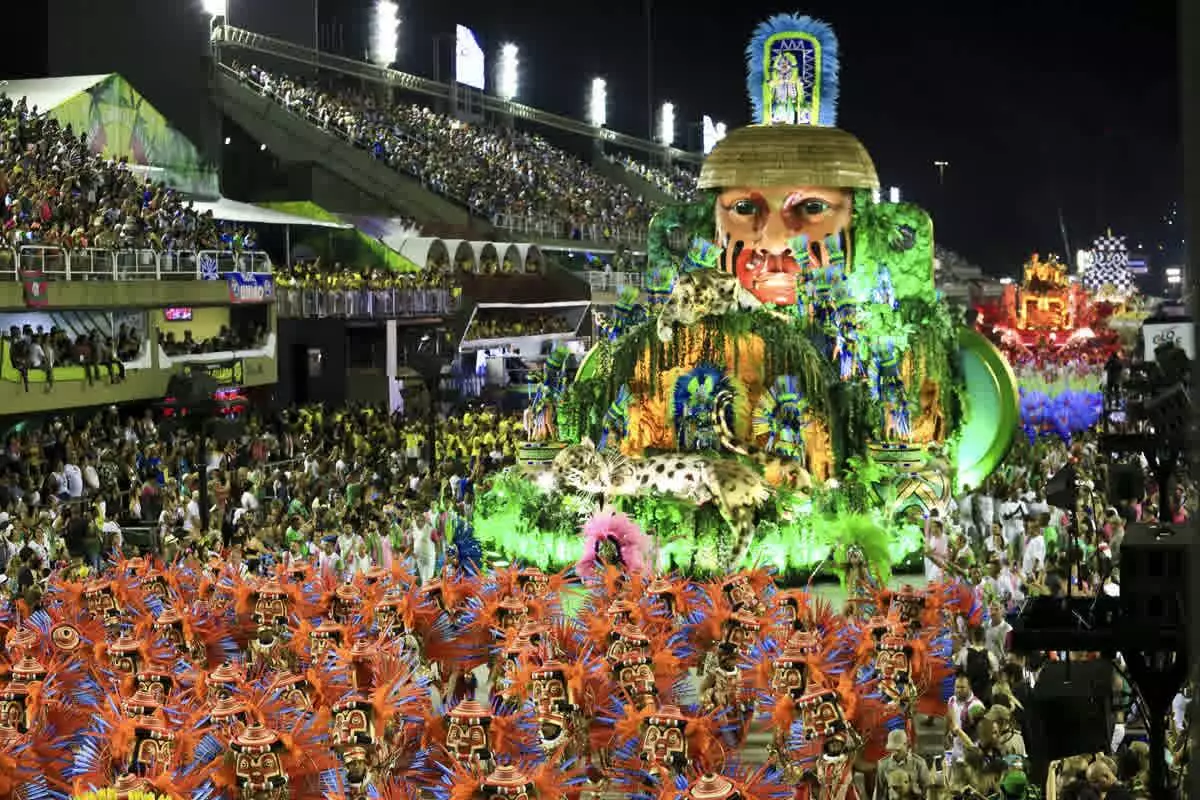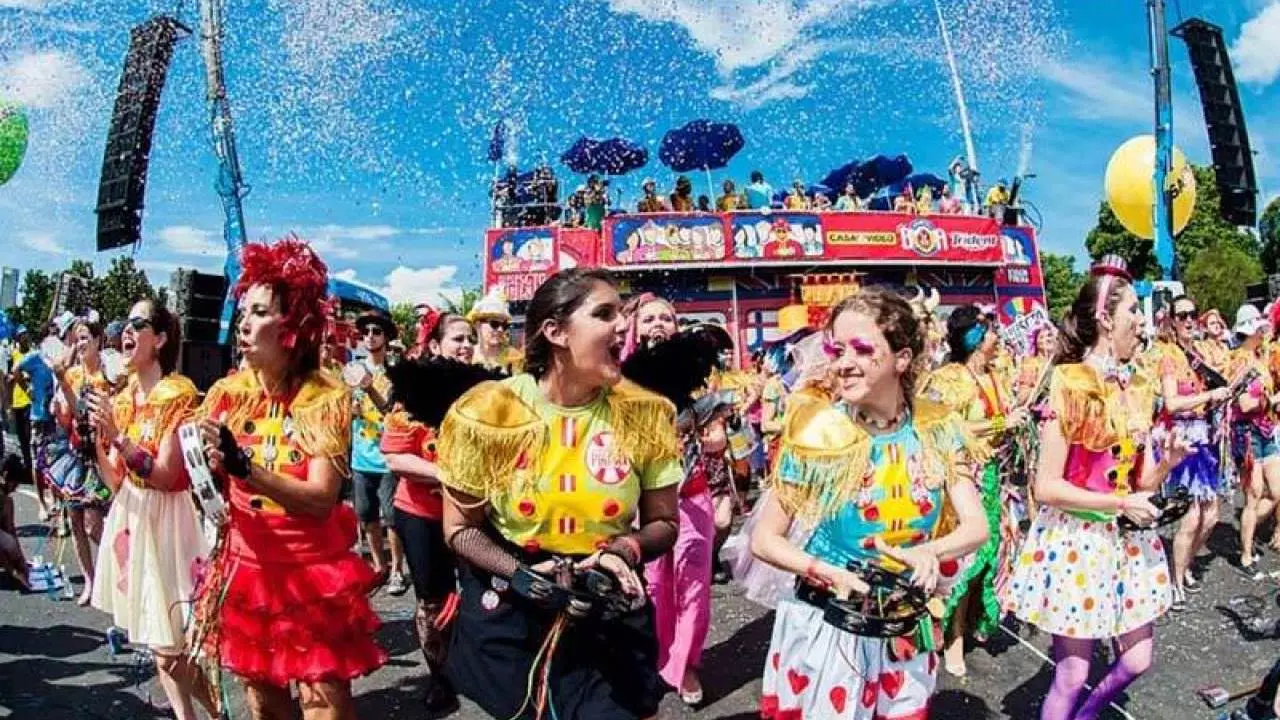All about Carnival in Rio.
Carnival in Rio is one of the most famous and popular parties in the world. It`s considered the biggest party in the world. Are you ready to celebrate Brazil’s Carnaval and enjoy the biggest Carnival parade?
Thousands of people in lavish costumes fill the streets, with samba in their hearts and caipirinhas in their cups. From the young to old, everyone dances during Carnival.
After the Portuguese brought the Lent holiday tradition in the 1500s, the combination of indigenous costumes and African rhythms turned Brazilian Carnival into a grand party, unlike anything else in the world.
As a celebration leading up to Ash Wednesday, it is rumored that the name actually comes from “Carne Vale,” meaning goodbye meat. To prepare for 40 days of abstinence, people lose all inhibitions with wild parties of sin in honor of King Momo, the King of Carnival.
When is the Carnival in Rio 2025?
The right answer is... Every year is different because the Carnival in Rio begins the Friday before Ash Wednesday, in other words, 51 days to Easter.
The official date of the 2023 Carnaval in Rio is February 28th to March 08th with the main parades on Sunday 19th and Monday 20th, with parties starting a few weeks before. The whole city is preparing to dance at the carnival and enjoy a big holiday.
Some of the most known characteristics of Rio’s Carnival include the Samba School Parades and street parties (commonly referred to as "Blocos".) If you plan to visit as a tourist, make sure you bring your dancing shoes. Jokes aside, you don't need much to have fun and watch the Carnival parade. In fact, Rio Samba Dancer takes you to dance on the Carnival in Rio.

How is the weather in Rio during carnival?
Usually, February is a wet and warm time in Rio de Janeiro, also the sunniest month, however last year (2022) rained almost every day, we recommend bringing at least one raincoat with you.
Where should I stay during Carnival?
During the Carnival in Rio, there are hundreds of street parties in every neighborhood of Rio. As you wander the streets, you find bands and blocos of marching parades, drums, vocalists, and classic Brazilian samba music.
In conclusion, we always recommend staying next to the beach. Copacabana, Ipanema, Leblon, or Leme. However, if you prefer to enjoy more nightlife you can stay around Lapa. Botafogo stays in the middle and usually is cheaper than beach neighbors.

Dance Samba at the street Parties
Where do the locals go to enjoy the carnival in Rio? The simple answer is Blocos. Usually, this website gives you time, and location of all blocos.
How are the blocos?
Blocos are a very fun and great atmosphere however keep your eyes open for pickpockets. In general, they are very safe.
People dance all around, with strangers, with friends, with family. You can show up in costume or come as you are, just make sure you are ready to dance! Put your costume and come to the street party. We recommend bringing cash with you so you can buy your drinks faster and void show your wallet.


Don't have a costume? Not a problem, first get the metro, second, stop in Uruguaiana station and finally, you will find lots of stores to buy your own costume. Your costume doesn't have to be very fancy, just be creative and if in doubt add more glitter.
Samba School Parades
Rio’s unique Carnaval celebrations revolve around their 12 samba schools. Each school has about 3,000-5,000 members and puts on an elaborate show using dancing, percussion, and costumes to tell a story.
The schools compete in the Sambodromo for pride, honor, and the chance to be recognized internationally for their performance.
Eight-thousand people fill the stadium to watch the fierce competition unfold. Tickets to the Samba School Parades are in high demand and can be very expensive.
To be honest, if you go to watch a carnival parade on Sambodromo, and you are not going to one of the (camarotes) parties, two hours watching the parade if enough to you have fun and see that experience.

Who can dance on Carnival Parade?
Everyone! To make a great show, samba schools need to spend a lot of money. They get this money from sponsors, the government, and also selling a few available spaces in their section of the parade. Usually, it's hard to get one of these spaces or can be not so safe, however, Rio Samba Dancer offers a great package for you.

Tickets and seats for Sambodromo.
Sambodromo is a stadium opened specifically to be part of Rio's Carnival. Was inaugurated in 1984 and was projected by a famous Brazilian architect call Oscar Niemeyer. Samba schools have 700 meters of avenue to show their work and impress people and judgments. After 36 years this place is still a symbol of Rio's carnival, even having space for around 60 thousand, could be hard to get a ticket for a great night.
Once you have a ticket for one of the sectors (see pic below), you can arrive anytime you want. Party starts at 9.30 pm however gates open at 7 pm.


Every sector of the Sambodromo has your pros and cons I will give some idea for you now and you feel free to choose how you like.
Few options for you
Frisa - This is a little area, very close to the parade, you really can see everything even how the dancers are sweating dancing the samba steps. Onde you buy this ticket you have a reserved seat. Usually, Frisa number 7D is covered, so its good for rainy days.
Arquibancadas - They don't have reserved seats and you seat on concrete steps, they are the cheapest seats and you seat anywhere you find according to your sector. Sector 13 is the cheapest one because of its right at the end of the parade. Sector 9 you can find numbered seats. Also, we recommend you bring a beach sarong or even a cushion so you can make your experience more comfortable.
Camarotes (VIP party) - There are few of camarotes around Sambodromo, some with DJ, private party, all-inclusive drinks, and buffet, usually can fit one thousand people inside, you can't seat to watch the parade but for sure you will have a great time with lots of buzzy and beautiful Cariocas around you. This is option is more for party people.

